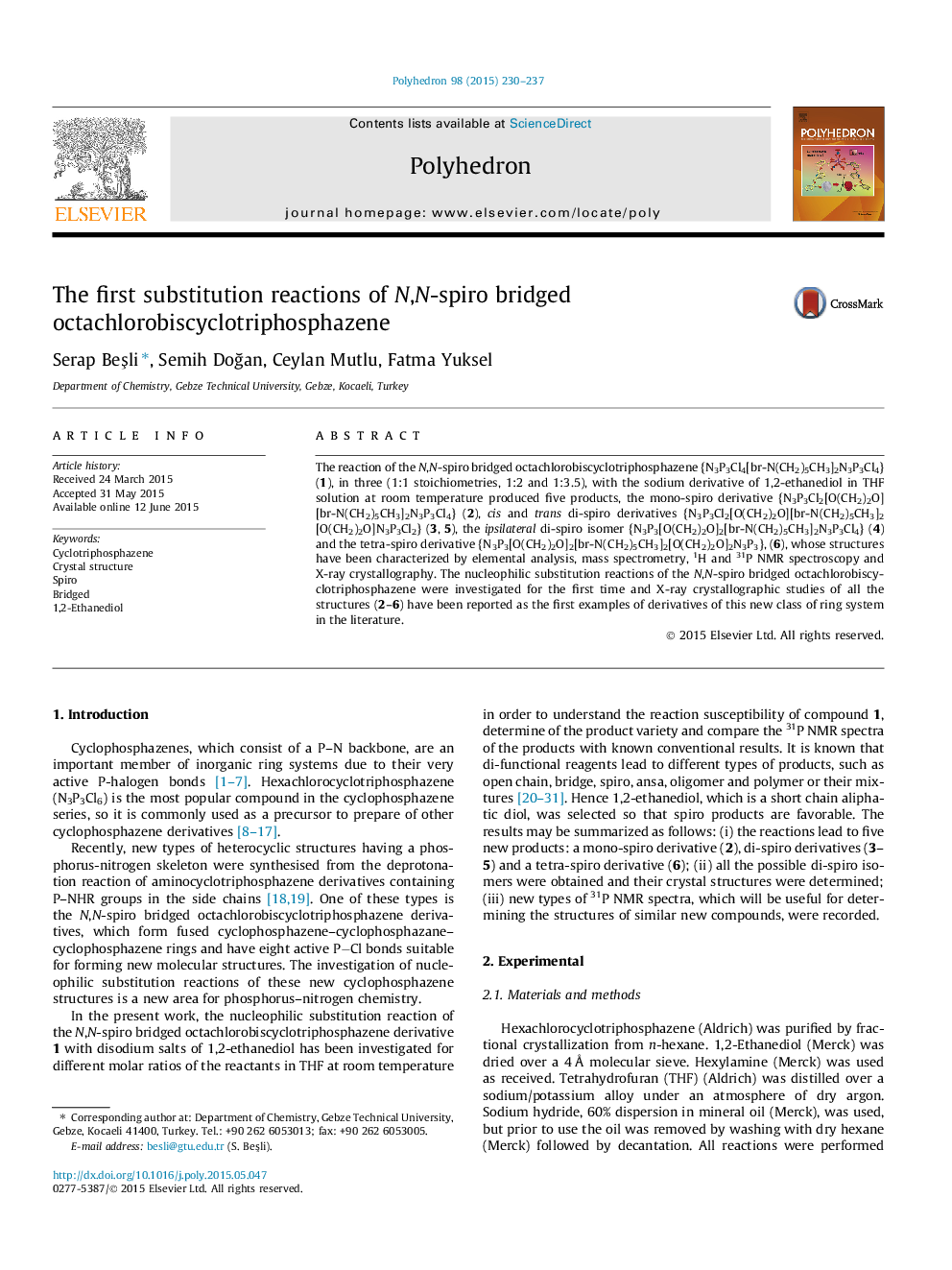| کد مقاله | کد نشریه | سال انتشار | مقاله انگلیسی | نسخه تمام متن |
|---|---|---|---|---|
| 1334362 | 1500241 | 2015 | 8 صفحه PDF | دانلود رایگان |

The reaction of the N,N-spiro bridged octachlorobiscyclotriphosphazene {N3P3Cl4[br-N(CH2)5CH3]2N3P3Cl4} (1), in three (1:1 stoichiometries, 1:2 and 1:3.5), with the sodium derivative of 1,2-ethanediol in THF solution at room temperature produced five products, the mono-spiro derivative {N3P3Cl2[O(CH2)2O][br-N(CH2)5CH3]2N3P3Cl4} (2), cis and trans di-spiro derivatives {N3P3Cl2[O(CH2)2O][br-N(CH2)5CH3]2[O(CH2)2O]N3P3Cl2} (3, 5), the ipsilateral di-spiro isomer {N3P3[O(CH2)2O]2[br-N(CH2)5CH3]2N3P3Cl4} (4) and the tetra-spiro derivative {N3P3[O(CH2)2O]2[br-N(CH2)5CH3]2[O(CH2)2O]2N3P3}, (6), whose structures have been characterized by elemental analysis, mass spectrometry, 1H and 31P NMR spectroscopy and X-ray crystallography. The nucleophilic substitution reactions of the N,N-spiro bridged octachlorobiscyclotriphosphazene were investigated for the first time and X-ray crystallographic studies of all the structures (2–6) have been reported as the first examples of derivatives of this new class of ring system in the literature.
The nucleophilic substitution reaction of N,N-spiro bridged octachlorobiscyclotriphosphazene with disodium salts of ethanediol lead to formation of stable trans, cis and ipsilateral di-spiro isomers.Figure optionsDownload as PowerPoint slide
Journal: Polyhedron - Volume 98, 25 September 2015, Pages 230–237